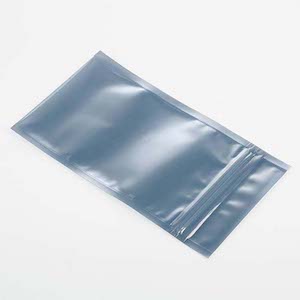Static Shielding Bags
Static shielding bag is a packaging solution that prevents the buildup of static electricity and protects against electrostatic charges. Anti-static bags feature a unique multilayer construction that shields components from electrostatic discharge (ESD).
Multilayer Construction and Enhance Static Protection
The bag’s inner layer is made of static dissipative polyethene, while the outer layer comprises aluminium shielding. A polyester layer with a static dissipative coating on the outside is between them. This combination creates a Faraday Cage effect and safeguards the components from internal and external static charges.
The re-closable bags have a convenient built-in plastic zip closure, making securing and reusing them easy. Their semi-transparency also allows for easy identification of the contents inside. ESD protective bags protect against external factors such as UV light, abrasions, and moisture.
Anti-static bags are widely used to store electrical components such as sensitive computer parts, including printer circuits and motherboards, prone to ESD damage. By enclosing ESD-sensitive items, ESD barrier bags give additional protection during handling, storage and transportation.
A wide array of customisation options is available for tailored solutions to meet specific requirements and preferences.
- Electrostatic Discharge (ESD) Protection
- Static Dissipative Polyethylene Inner Layer
- Aluminum Shielding Outer Layer
- Polyester Layer with Static Dissipative Coating
- Convenient Re-Closable Design
- Semi-Transparency for Easy Identification
- Protection against External Factors
- Safeguard Sensitive Computer Parts
- Extra Protection during Handling and Transportation
- Closure: Zip-lock or heat-sealed closure for secure sealing
- Sizes: Available in various sizes and shapes to accommodate different electronic components and devices
- Puncture Resistance: Designed to resist punctures and physical damage during handling and transportation
- Compliance: Meets industry standards for ESD protection, such as ANSI/ESD S20.20 and IEC 61340-5-1


